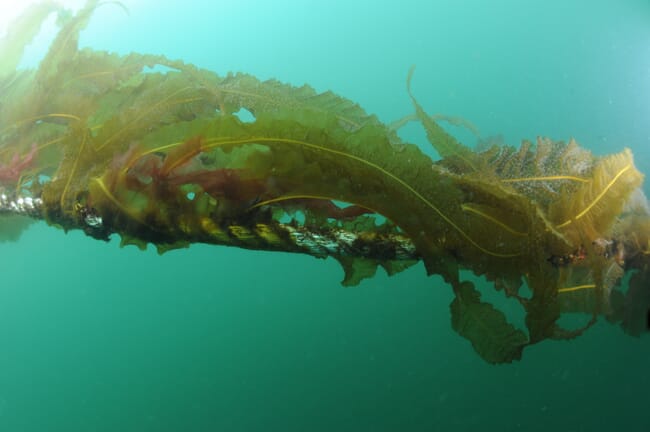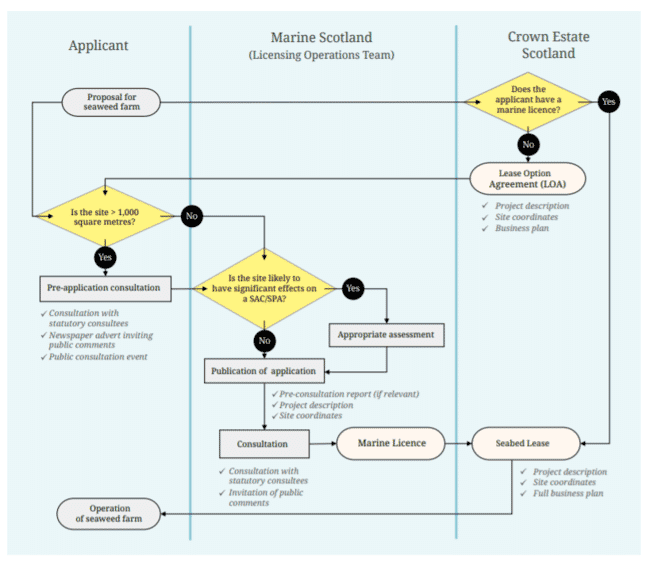
© SAMS
The guide - which was commissioned by the Scottish charity, the Sustainable Inshore Fisheries Trust (SIFT) - warns against “significant risks if the industry is allowed to expand without taking sufficient account of the potential effects on marine ecosystems or the consequences for other legitimate uses of the marine environment”.
The document notes a growing interest in seaweed cultivation, in particular of kelp species using pre-seeded longlines, around the coasts of Scotland. While the market is in its infancy, these seaweed species can be used for a variety of purposes, including human consumption, animal feed, biofuel, fertiliser, cosmetics and pharmaceuticals.
“Since November 2018, applications have been submitted to grow and harvest seaweed in an area covering more than 2 million square metres of the Scottish marine area and the sector is expected to continue growing,” according to the report.
The first part of the guide aims to “help local communities to understand how proposals for seaweed cultivation in their area might impact upon the marine environment and other marine activities” and also “highlights the types of questions that individual stakeholders or communities may want to ask about proposals to develop seaweed cultivation in their local area”.
Potential benefits
The guide looks at the potential benefits of seaweed aquaculture, which include provision of habitats and ecosystem services for a range of marine species and its use in integrated multi-trophic aquaculture (IMTA) systems in order to absorb a range of excess nutrients from finfish farms. It also mentions the possible carbon sequestration that can be achieved by seaweed farms, but cautions that “the long-term benefits are significantly dependent upon the fate of the seaweed after it has been harvested”.
Potential disadvantages
Risks prosed by seaweed aquaculture, according to the report, include the potential loss of benthic habitat to equipment such as anchors that are needed to establish seaweed farms and the possibility of marine mammals and other large species becoming entangled in the lines. As a result, it argues that such installations must avoid key routes for migration.
Other concerns raised include the influence that seaweed farms are likely to have on coastal hydrology, and the possibility of farmed seaweeds could impact the genetic diversity of wild species.
“Recent research suggests that there may be substantial genetic diversity amongst seaweed populations of the same species. In order to protect genetic diversity, it is recommended that seedstock should not be collected directly from cultivated seaweed but rather should be collected from naturally occurring seaweed from the same body of water in which the seaweed farm is located,” the authors note.
Furthermore the report voices concerns about noise pollution during times such as harvesting, which might disturb wildlife; the possible pollution caused by lost or damaged equipment and seabed shading – by which the plants reduce the light available to benthic communities, particularly in shallower waters. In particular it suggests that it’s important not to site seaweed farms over maerl or seagrass beds.
Other potential issues flagged up by the report include the possible depletion of nutrients on a localised basis near seaweed farms and the visual impact of seaweed sites.
How to apply
The second part of the document explains the policy and legal framework which applies to seaweed cultivation and the decision-making processes for the authorisation of seaweed farms in Scotland.
It also sets out the opportunities for stakeholder participation in the decision-making process, with a view to ensuring that local communities can make their voices heard in the debate about the future development of the seaweed industry in Scotland.

© Pakatida Suwonnawong



